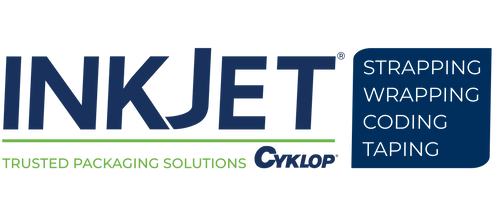Combining Continuous Band Sealers and Industrial Printers: What To Know
Companies across all manufacturing and packaging industries have many options for packaging their goods. For those unaccustomed to automated packaging processes, the number of options available can be intimidating. To ease into automation, many upstart and mid-tier companies turn towards semi-automated packaging technologies—a category that includes continuous band sealers.
Used to complete thermoplastic bag and flexible pouch applications, continuous band sealers are a great way for businesses to upgrade their packaging processes without having to make the commitment towards full automation.
Here, we take a look at how users can use continuous band sealers in conjunction with industrial printers to comply with modern product packaging standards.
How Continuous Band Sealers Work
Continuous band sealers are production line packaging machines that use heating elements to enclose products inside bags and pouches. They come in two models: horizontal and vertical. The horizontal models seal the sides of bags/packages while vertical models seal the top of standing packages.
Typically, continuous band sealers consist of two main parts:
- The band sealer itself, which uses heat to seal bags/pouches as they pass through.
- A conveyor belt, which feeds bags/pouches through the band sealer and further down the line.
Along with these two main elements, continuous band sealers are built with other parts that enable proper operation and dimensional adjustment to accommodate the size of different materials. These parts include:
- A bag entry guide, which keeps packaging stable during the sealing process.
- A control panel, which contains important elements like a power switch, heat switch, conveyor belt speed controls, and an emergency stop button.
- Conveyor height adjustments (for horizontal models), which raise and lower the conveyor belt.
- Sealing height knobs (for vertical models), which adjust the height of the band sealer to fit differently sized bags.
Using these parts, users can adjust their continuous band sealers to precisely meet the dimensions of their packages. As a result, they can ensure that their goods are sealed for freshness and able to last on the shelf.
Of course, to sell these packages in stores, companies also need to apply any required codes and traceable markings—this requires the use of an industrial marking machine.
How To Use a Continuous Band Sealer With an Industrial Printer to Comply With Labeling Standards
Modern labeling standards are established by both federal and state lawmakers as well as distribution networks. While these standards inevitably vary on an industry-by-industry basis, they nearly all require the presence of fully traceable codes and markings somewhere on the product packaging. Most often, these markings take the shape of:
- Lot codes
- Serial numbers
- Filled on/expiration dates
- Bar codes
- Data matrices
To satisfy labeling requirements, companies are not only required to simply place these markings on their goods but also ensure the longevity and durability of the codes. This requires the use of an industrial inkjet printer.
When combining a continuous band sealer with an industrial printer, users generally integrate one of two inkjet technologies:
Although both of these printing technologies fall under the “inkjet printer” category and are capable of marking bag/pouch packaging, they differ greatly in size and marking speed.
Continuous inkjet (CIJ) printers like the DuraCode Touchscreen are large machines that often weigh close to 100 lbs when filled with printing fluid. They aren’t designed for portability but instead for high-speed printing day-in and day-out in the same position. The internal design of CIJ printers is a highly-pressurized, continuous flow of ink whenever the machine is turned on. With the aid of this ink stream, CIJ printers are able to mark packages moving at speed up to 300 m/min for 24 hours a day.
Thermal inkjet (TIJ) printers, on the other hand, are much more compact and easier to move. Weighing around five pounds, TIJ models like the Anser U2 Pro-S offer users high portability and intuitive usage. At the same time, most TIJ models do not offer the same printing speeds as CIJ printers—the top marking speed of the Pro-S is 120 m/min while the DuraCode Touchscreen maxes out at 320 m/min. However, not all production lines require the industrial speeds offered by CIJ printers, especially lines that are using semi-automatic technologies like continuous band sealers.
In addition, most TIJ printers are less expensive than CIJ printers, making them more accessible to smaller-scale operations. Although, if you will be scaling up production in the near future, a CIJ printer or a faster TIJ model like the recently released Anser X1 may be a great investment.
Given all of these variables, we recommend speaking directly with an expert before investing in machinery for your growing production line.
Ready To Upgrade Your Packaging Process? InkJet, Inc. Is Here To Help
A continuous band sealer is a great way to begin automating your packaging process. With the aid of a band sealer, you can finalize bag and pouch packaging in-house and ensure long-lasting product freshness. Of course, to sell these sealed packages online and in stores, you must also outfit them with industry-standard codes and text. Thankfully, this isn’t hard if you have the right printing technology for the job.
Whether you need an industrial-strength CIJ or a compact TIJ to meet your output requirements, InkJet, Inc. has a printer for you. Contact us today to learn which option will work best for your situation.
For more information on how to combine a continuous band sealer with an industrial printer for marking success, contact us online today or call 1(800) 280-3245.



